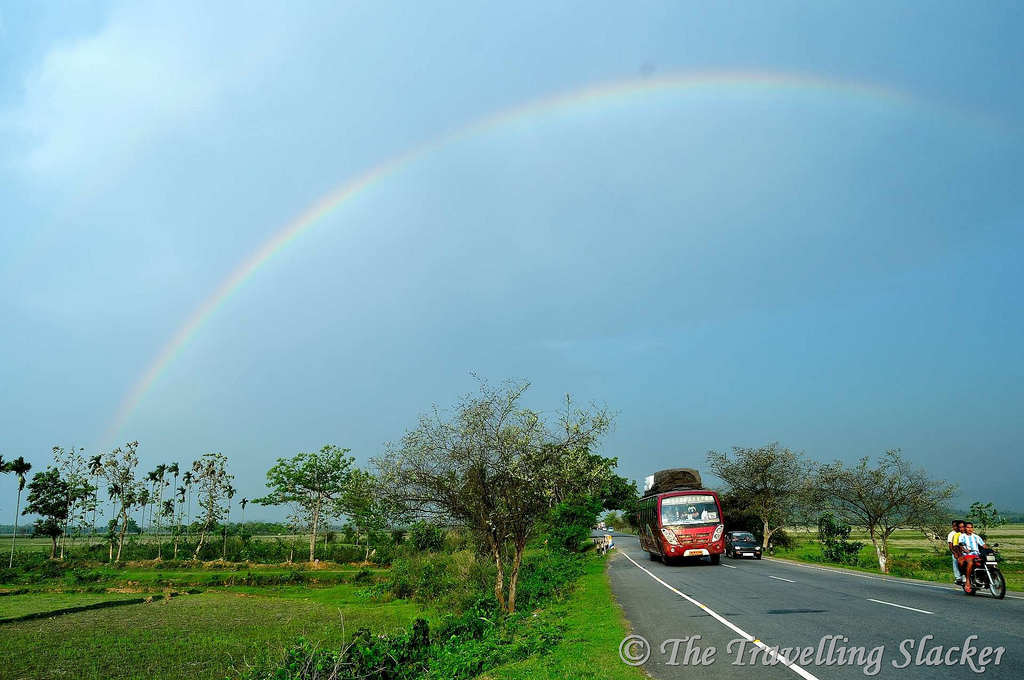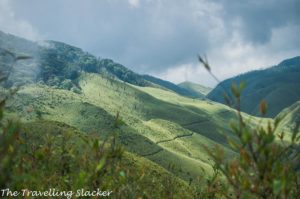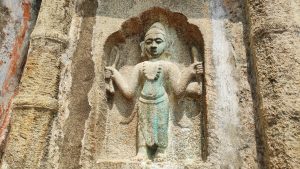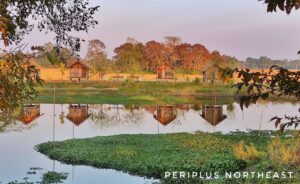Assam is the most populous state in the Northeast India. Assam Tourism, although has a lot of unfulfilled potential, is still among the better-known of the northeastern states. Being a plain valley, it is also the easiest to explore, compared to its hilly neighbours.
Historically, Assam has been the gateway to the Northeast. Culturally Assam stands somewhere in between, not completely detached from the mainland India, yet not completely similar to it either. The Assamese language itself is an Indo-Aryan language but with visible Sino-Tibetan influences contributed by the people coming from the east, which makes it distinctive from the rest of the languages of the family.
Table of Contents
Assam Tourism: What to See in Assam?
Assam primarily consists of plain river valleys, namely Brahmaputra Valley & Barak Valley, surrounded by other hilly states of the Northeast on all sides and the plains of West Bengal and Bangaldesh on the western border. The primary river here is the great Brahmaputra River, and most major towns are located on the banks of it, while the Barak in the south also waters a densely populated region. A small hilly region is snadwiched between both of these valleys.
From a tourism perspective, the primary attractions can be divided into the following categories.
National Parks: Wildlife Escapes

Assam has been blessed generously by the nature. There are scores of national parks and wildlife sanctuaries here including two UNESCO World Heritage Sites, namely Kaziranga National Park and Manas National Park. One-horned rhinos, tigers, leopards, elephants, pangolins, greater adjutant storks, white winged wood ducks, are only a few of the treasures found here, apart from scores of migratory birds that visit in the winter. There are lesser known national parks such as Dibru Saikhowa, where you can enjoy a river cruise and spot feral horses and gangetic dolphins, or Hoollongapar Gibbon Sanctuary dedicated solely to hoolock gibbons, the only ape found in India!
There are many other National Parks such as Orang National Park, Nameri Natonal Park, Pobitora Wildlife Sanctuary, Dehing-Patkai Wildlife Sanctuary etc.
Assam Heritage Tourism
Assam has plenty of historical delights to offer. Unfortunately, not all of them have been preserved well and offers good infrastructure for tourists. The best-maintained heritage town in Assam is probably Sivasagar, the medieval capital of Ahom Kingdom, full of historical monuments. Guwahati, the current centre of the state and the largest city in the Northeast India, also has an ancient history and scores of ancient temples and ruins can be found in and around the city.
Many other ancient temples can be found all over the state including Hayagriva Madhab Temple, Madan Kamdev Temple, Sri Surya Hills etc. Another noticeable kind of heritage in Assam is the Vaishnavite Satras enduring from the middle ages. Most of them can be found in the famed river island of Majuli along with many other areas such as Nagaon and Barpeta.
Brahmaputra River Tourism: Islands and Cruises
The Brahmaputra is one of the great rivers of India. It is also one of the longest, if we consider the portions that flow through Tibet and Bangladesh. This river is so deep and powerful that it remains navigable throughout the year, including the dry winter. Still, the river and its banks remained rarely explored until recently. However, the river cruise facility along the Brahmaputra was introduced a few years ago and it has become popular pretty quickly.
A river cruise is just like an ocean cruise, where you get your own cabin in a ship, and it goes on for several days. It makes stop at various points so that you explore some of the best destinations in Assam, including Kaziranga National Park, famous for one-horned rhinos, Majuli, the largest river island in the world and cultural capital of Assam, Sivasagar, a heritage city and medieval capital of India, and various lush green tea gardens, since Assam is also the largest tea producer in the world.
Majuli is a river island on the River Brahmaputra in Assam. It is one of the largest in the world as per the records. However, you don’t have to visit Majuli just because it is mentioned in the record books. There are many other delights offered by this island. In fact, Reaching Majuli itself is an adventure. You need to cross the river on a boat and due to its location, it has seen very limited urbanization. This makes it a secluded, rustic, and peaceful entity far away from other towns and cities in the state. It is also a good spot for nature lovers, especially bird watchers. Many local water birds and some migratory birds are easily visible in the open fields and water bodies all over Majuli.
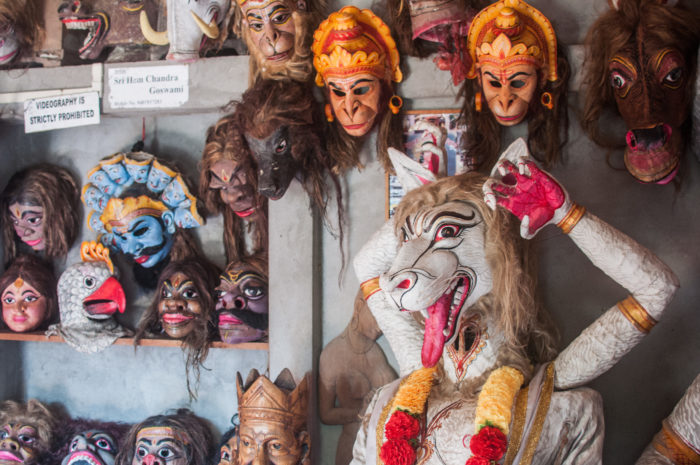
Majuli is also the cultural centre of Assam, one of the primary centres of the neo-Vaishnavite culture that have been dominating the sociocultural life of most parts of Assam over the last 500 years. There are many “Satras” in Majuli, which are the institutional centres of the aforementioned religious sect. They not only work as religious sites but also as cultural centres that have a huge influence on the social lives of the local people. Classical dance forms, drama, and music have also been developed through these institutions over five centuries.
Tea Gardens
Even now, the entire upper Assam seems like a series of tea gardens and Dibrugarh remains the centre of Assam’s tea trade which is world-famous. Some of the old colonial bungalows have now been turned into tourist lodges. So, you can enjoy the largest tea growing region in the world, staying at a colonial bungalow overlooking a lush green tea garden, sipping quality tea.
While at it, you can also take some time off to understand the entire tea production process, buy some of the best tea in the world right from the point of production, and also explore the lives and culture of tea garden tribes that have been working for generations in some of these gardens.
Some tea gardens can be found in neighbouring NE states too. For more details, read this post about Tea Tourism in Northeast India.
Cultural & Ethnographic Tours
The Brahmaputra Valley is inhabited by Assamese speaking people along with various tribes such as Bodos, Mishings, Rabhas, and many others. The middle part of Assam consists of hilly areas, namely Karbi Anglong, inhabited by the Karbi people and Dima Hasao (called North Kachar earlier) inhabited by the Dimasa people. The southern part of Assam is the Barak Valley, fed by the Barak River, a primarily Bengali dominated area which was connected to the Sylhet region of present day Bangladesh.
There is a huge scopes for cultural and ethnographic tours in this region although very few places have really focused on developing such experiences. I will keep you updated
Hill Stations of Assam
Assam does have some hills, mostly spread around the middle districts of Karbi Anglong and Dima Hasao (North Cachar). Sadly they remain underdeveloped in terms of tourism in spite of huge potential. The Guwahati-Silchar train line passes through these hills and this ride throgh dense forests and many tunnels is worth a try.
Assam Tourist Map
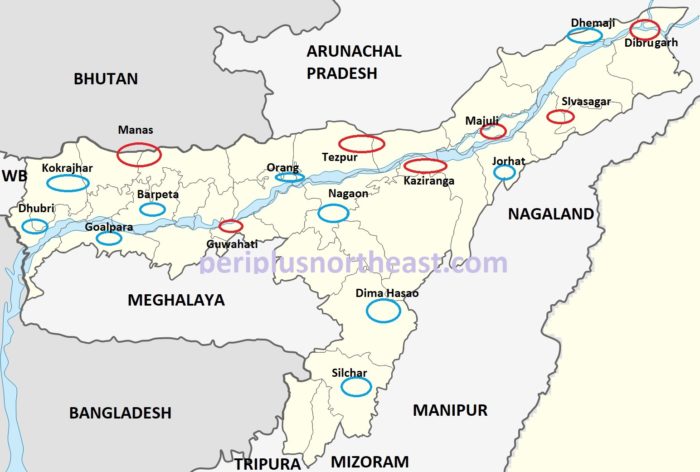
The following Assam Tourism Map should give you an idea of the relative locations of various tourist attractions. I have not listed every spot here but have marked the approximate areas that are important for tourism. The Red ones are bigger and better-known, and also have better infrastructure. The blue one’s are lessern-known.
Manas is a National Park & UNESCO World Heritage Site bordering Bhutan.
Guwahati is the largest city in the entire Northeast and the gateway to the rest of the region. Many historical sites and temples can be found in an around the city. Also, Shillong in Meghalaya is just 2 hours drive from here.
Kaziranga is is a National Park & World Heritage Site best known for one-horned rhinos.
Tezpur is a historical city and is also the gateway to Bhalukpong, Bomdila, & Tawang circuit in Arunachal Pradesh.
Majuli is among the largest river islands in teh world and also the cultural capital of Assam.
Sivasagar is a historical city and medieval capital of Assam, full of monuments.
Dibrugarh is the largest city in Upper Assam, rich in Tea, Oil, and Coal. Another major city nearby is Tinsukia. The Dibru-Saikhowa National Park is nearby, and it is the gateway to various sites in Arunachal including Namdapha National Park.
Dhubri is the westernmost town in Assam, near to the Bangladesh border. It was never developed as a tourist spot but has many colonial ruins as well as ancient shrines.
Kokrajhar is the center of Bodoland. There are many lesser known places here.
Barpeta is another small tonw in lower Assam with many Vaishnavite Satras. If you go to Manas form Guwahati, this can be a detour. The Doul (Holi) is famous here.
Goalpara is again an unesplored area. Sri Surya Hills is a major archaeological site here and it is easy to reach from Guwahati.
Nagaon is in the middle of the Brahmaputra Valley. It has a few historical sites such as Bordoa (related to teh Vaishnavite movement of the middle ages), however, it remains unesplored.
Orang in Darrang DIstrict is a Major National Park on the banks of Brahmaputra.
Dima Hasao is one the hill districts of Assam which is beginning to develop tourism but has a long way to go. Places like Haflong & Jatinga are worth mentioning.
Silchar is the largest city in Barak Valley. Unfortunately tourism has not developed much here. However, due to its location, it is the gateway to Manipur, Mizoram, & Tripura. The Delhi-Guwahati-Agartala Railway line also passes through Silchar.
Jorhat is another major city in Upper Assam. It is the gateway to Majuli and also Dimapur, the gateway to Nagaland is nearby. Gibbon Sanctuary is not far from here too.
Dhemaji & Lakhimpur are rarely known for tourism. But this easternmost region on the northern bank of Brahmaputra acts as a gateway to various important circuits of Arunachal like Mechuka & Ziro.

